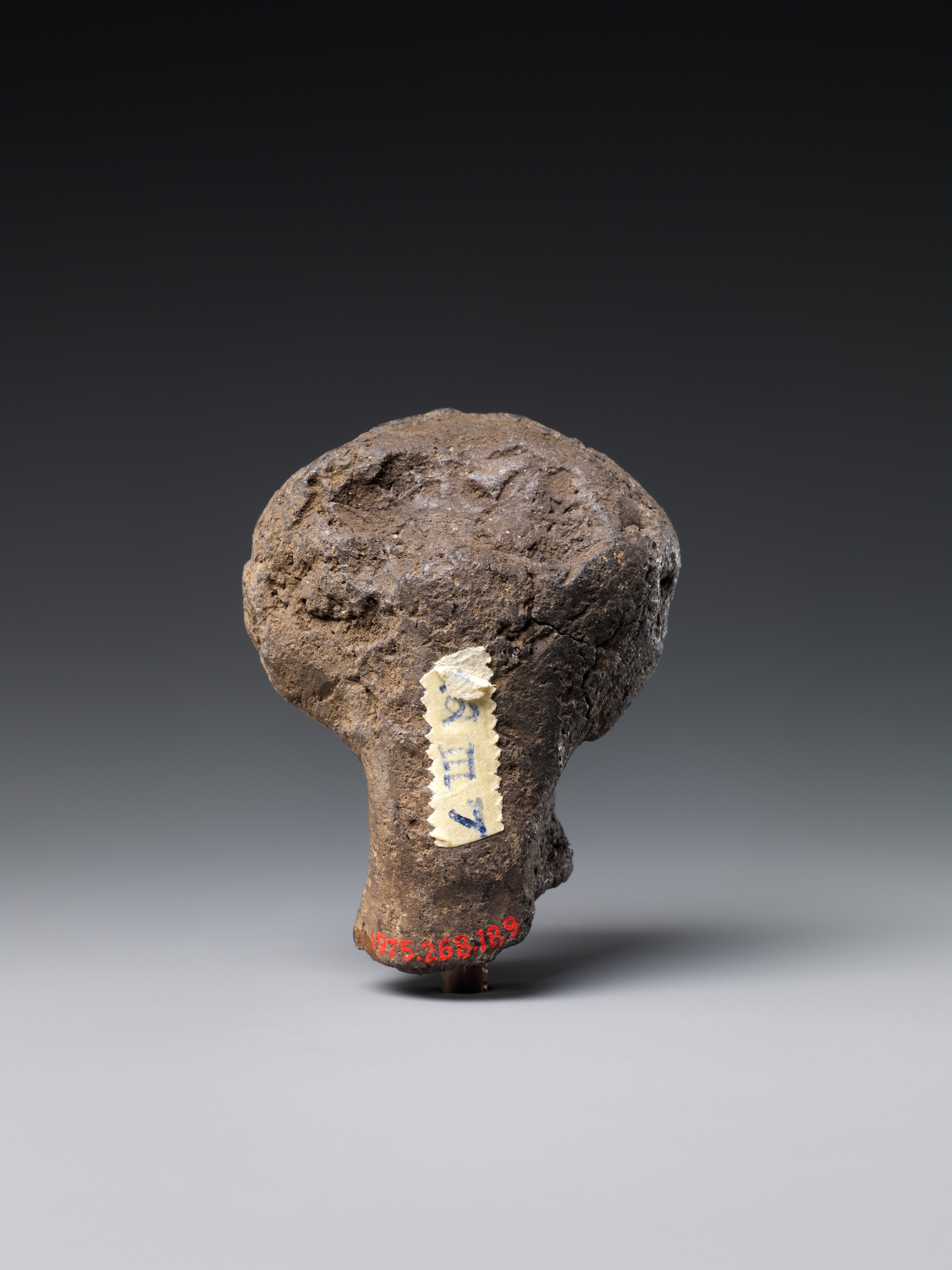Head of a Clay Figure (Dogū)
Late Jomon period (ca. 1500–1000 BCE)
Not on view
This head was once attached to a dogū clay figure, a kind of ceramic sculpture particular to the Jōmon period of Japanese history. The vast majority of dogū are not found intact, most having their heads or limbs removed or bodies broken. It is unknown exactly why dogū were broken before being discarded, but some theories contend that the dogū represented a kind of “earth mother” figure, and that breaking the dogū propagated the spirit of the “earth mother” in order to bring fertility to the land.
Due to rights restrictions, this image cannot be enlarged, viewed at full screen, or downloaded.
This artwork is meant to be viewed from right to left. Scroll left to view more.




